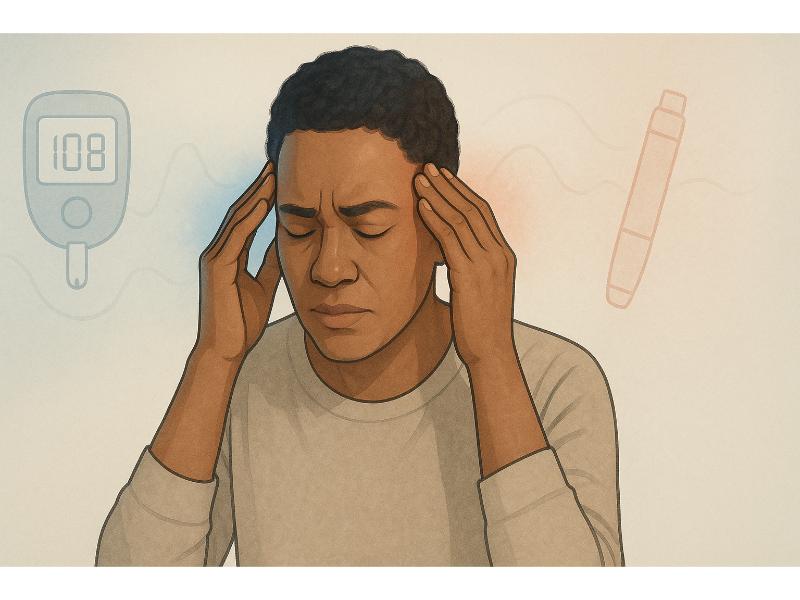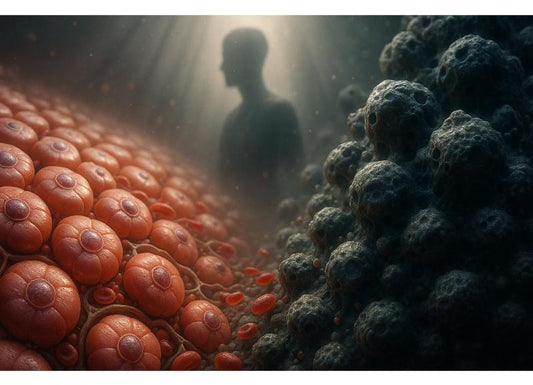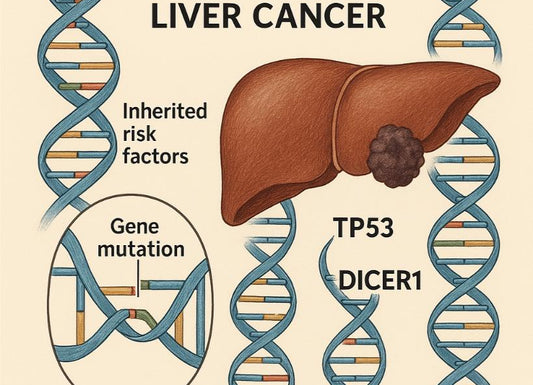Diabetes Headaches: Causes, Symptoms, and Relief Options
 Written By
Jaclyn P. Leyson-Azuela, RMT, MD, MPH
Written By
Jaclyn P. Leyson-Azuela, RMT, MD, MPH

Living with diabetes brings unexpected challenges, and headaches rank among the most frustrating symptoms to manage. If your head throbs after meals or when you skip your usual snack, you're not alone in wondering whether blood sugar plays a role. Understanding the diabetes headaches helps you take control of your symptoms and protect your health. This guide covers everything you need to know, from causes to relief strategies.
Key Insights
-
Blood sugar swings trigger headaches through dehydration, inflammation, and blood vessel changes
-
High blood sugar above 200 mg/dL and low blood sugar below 70 mg/dL cause distinct headache patterns
-
Diabetes headaches differ from migraines and often appear as dull, persistent pain rather than one-sided throbbing
-
Emergency signs include severe headaches with confusion, vision changes, or fruity-smelling breath
-
Check your blood sugar first, then rehydrate and correct levels for fastest relief
-
Maintain blood sugar between 80-130 mg/dL before meals to prevent most diabetes-related headaches
Can Diabetes Cause Headaches?
Diabetes causes headaches through multiple pathways in your body. Blood sugar levels directly affect brain function since glucose serves as the brain's primary fuel. When levels swing too high or drop too low, your brain experiences stress that shows up as head pain.
Research shows people with diabetes get headaches more often than those without the condition. The connection exists because unstable blood sugar creates a cascade of physical responses:
-
Dehydration from frequent urination when blood sugar runs high
-
Inflammation in blood vessels throughout your body and brain
-
Hormonal shifts as your body tries to correct glucose imbalances
-
Energy deficits in brain cells when glucose supply becomes unreliable
-
Blood flow pattern changes that affect oxygen delivery to brain tissue
Your nervous system responds to these disruptions by sending pain signals. This is your body's alarm system alerting you that something needs attention. Headache frequency and intensity often correlate with how well you manage your diabetes overall.
What Is the Link Between Blood Sugar Levels and Headaches?
Blood sugar levels and headaches share a direct cause-and-effect relationship. Your brain consumes about 20% of your body's glucose despite making up only 2% of your body weight. When glucose availability changes, your brain reacts immediately.
High blood sugar above 200 mg/dL triggers headaches through several mechanisms:
-
Excess glucose pulls water from brain tissue and causes mild dehydration
-
Blood vessels constrict and then dilate irregularly
-
Inflammatory chemicals increase throughout your bloodstream
-
Cellular energy production becomes less efficient
Low blood sugar below 70 mg/dL creates headaches through different pathways:
-
Your brain lacks sufficient fuel to maintain normal function
-
Stress hormones like adrenaline flood your system
-
Blood vessels dilate rapidly to increase blood flow
-
Your body releases chemicals that stimulate pain receptors
Your headache severity often matches the speed and extent of blood sugar changes. A gradual rise to 180 mg/dL might cause mild discomfort. A sudden spike to 300 mg/dL typically produces intense pain. Similarly, a slow decline to 65 mg/dL differs from a rapid crash to 50 mg/dL.
You can test this connection yourself. Check your blood sugar when headaches strike. Keep a log for two weeks noting your glucose readings and headache intensity on a scale of 1-10. Most people discover clear patterns that help predict and prevent future episodes.

Are Headaches an Early Warning Sign of Diabetes?
Headaches can signal undiagnosed diabetes, but they rarely appear as the only symptom. If you experience frequent headaches alongside increased thirst, frequent urination, blurred vision, or unexplained weight loss, diabetes might be developing. Diabetes is a known risk factor for migraine headaches.
Your body struggles to process glucose properly before diabetes gets diagnosed. This creates blood sugar swings that trigger head pain even though you don't yet know your glucose levels run high. The headaches often worsen after eating carbohydrate-rich meals as your blood sugar spikes without adequate insulin response.
However, headaches alone don't confirm diabetes. Many conditions cause frequent head pain:
-
Dehydration from insufficient water intake
-
Poor sleep quality or irregular sleep schedules
-
Chronic stress or anxiety
-
Caffeine withdrawal or overconsumption
-
Vision problems requiring corrective lenses
-
Sinus infections or allergies
If you have risk factors like family history, obesity, or a sedentary lifestyle combined with frequent headaches, get your blood sugar tested. A simple fasting glucose test or A1C measurement at your doctor's office provides clarity. Early detection allows you to start managing blood sugar before complications develop. You may also use at-home glucose urine test strips to monitor whether the blood sugar has exceeded the kidney’s threshold.
Frequency and Patterns of Headaches in People with Diabetes
People with diabetes experience headaches in distinct patterns that differ from occasional tension headaches. Understanding these patterns helps you identify when diabetes might be the cause.
Common timing patterns include:
-
Morning headaches when blood sugar drops overnight from extended fasting
-
Post-meal headaches 1-2 hours after eating when blood sugar peaks
-
Late afternoon headaches when lunch portions were insufficient
-
Evening headaches from accumulated stress on blood sugar throughout the day
Frequency varies based on blood sugar control. Well-managed diabetes might produce headaches once or twice monthly. Poorly controlled diabetes can cause daily or weekly episodes. A study showed that diabetic patients are more likely to experience headaches prior to initiation of insulin therapy, which showed 80-90% reduction in frequency.
Duration also provides clues. Diabetes headaches typically last 30 minutes to several hours and resolve once blood sugar returns to normal range. Headaches lasting multiple days suggest other causes that need medical evaluation.
Location patterns matter too. Diabetes headaches usually affect both sides of your head rather than one side like migraines. The pain might start at your temples and spread across your forehead, or begin at the back of your head and move forward.
Track your headache patterns for 2-3 weeks. Note the time, what you ate in the previous three hours, your blood sugar reading, and how long the headache lasts. This information guides both you and your healthcare provider toward effective solutions.
Types of Diabetes-Related Headaches
Diabetes produces several distinct types of headaches. Each has unique causes and characteristics. Recognizing which type you're experiencing helps you respond appropriately and find faster relief.
High Blood Sugar (Hyperglycemia) Headaches
High blood sugar headaches develop when your glucose level exceeds 200 mg/dL for extended periods. Your body responds to excess glucose by pulling water from tissues, including brain tissue, to dilute sugar concentration in your blood. This mild dehydration stresses brain cells and triggers pain signals.
These headaches build gradually over several hours as blood sugar rises. You might notice the pain starting as mild pressure that intensifies throughout the day. The sensation often feels like a tight band around your head or steady pressure behind your eyes.
Additional symptoms accompany hyperglycemia headaches:
-
Increased thirst despite drinking fluids
-
Frequent urination every 1-2 hours
-
Blurred vision that comes and goes
-
Fatigue that makes concentration difficult
-
Dry mouth and skin
High blood sugar headaches won't resolve with typical pain relievers until you correct your glucose level. Drinking water helps but doesn't fully address the problem since your glucose level needs to drop.
People with type 1 diabetes might experience these headaches when they miss insulin doses or their insulin pump malfunctions. Those with type 2 diabetes typically get them after eating large portions of carbohydrates without adequate medication or when illness stresses their body and raises blood sugar.
Low Blood Sugar (Hypoglycemia) Headaches
Low blood sugar headaches strike quickly when glucose drops below 70 mg/dL. Your brain detects the fuel shortage immediately and sounds an alarm through pain signals. These headaches often feel more intense than high blood sugar headaches because your brain treats low blood sugar as an emergency.
The pain typically throbs or pounds rather than pressing steadily. You might feel it concentrated in your temples or across your entire forehead. The headache appears suddenly, sometimes within 10-15 minutes of blood sugar dropping.
Warning signs alongside the headache include:
-
Shakiness or trembling in your hands
-
Sudden sweating even in cool temperatures
-
Rapid heartbeat you can feel in your chest
-
Intense hunger that feels urgent
-
Anxiety or irritability without clear cause
-
Dizziness when standing or moving
-
Confusion or difficulty thinking clearly
Low blood sugar headaches require immediate treatment. Your brain needs glucose restored quickly to prevent worsening symptoms. Waiting or trying to push through the pain puts you at risk for severe hypoglycemia, which can cause loss of consciousness.
Common triggers include:
-
Skipping meals or eating later than usual
-
Exercising more intensely or longer than typical without adjusting food or medication
-
Taking too much diabetes medication or insulin
-
Drinking alcohol without eating adequate food
-
Hot weather that increases insulin absorption
Medication-Related Headaches
Diabetes medications cause headaches in some people, especially during the first few weeks of starting a new drug. Your body needs time to adjust to how the medication affects your blood sugar and overall metabolism.
Metformin, the most commonly prescribed diabetes medication, causes headaches in 5-12% of users initially. The headaches usually decrease after 2-3 weeks as your body adapts. Taking metformin with food reduces this side effect for most people.
Insulin can trigger headaches through two pathways. First, if doses are too high, you might experience low blood sugar headaches. Second, some people react to the preservatives or additives in certain insulin formulations with mild allergic responses that include head pain.

Other diabetes medications associated with headaches:
-
SGLT2 inhibitors like empagliflozin or canagliflozin through increased urination and dehydration
-
GLP-1 receptor agonists such as semaglutide or dulaglutide during the adjustment period
-
Sulfonylureas by causing low blood sugar if timing or dosing isn't matched to meals
Blood pressure medications often prescribed alongside diabetes drugs also contribute to headaches. The combination of multiple medications affects blood flow and fluid balance, sometimes resulting in head pain.
If medication headaches persist beyond one month or interfere with daily activities, talk with your healthcare provider. Alternative medications or adjusted dosing schedules might eliminate the problem. Never stop prescribed medications without medical guidance. Uncontrolled blood sugar poses greater risks than headache side effects.
Dehydration and Secondary Triggers
Dehydration headaches occur frequently in people with diabetes because high blood sugar increases urine production. When your kidneys filter excess glucose from blood, water follows the sugar into urine. You lose more fluid than you realize, especially overnight or during busy days when you forget to drink regularly.
Signs your headache comes from dehydration:
-
Dark yellow urine instead of pale yellow
-
Dry lips and decreased saliva
-
Headache that worsens when standing up
-
Relief within 30 minutes of drinking 16 ounces of water
Secondary triggers combine with diabetes to increase headache risk:
-
Stress releases cortisol that raises blood sugar and tenses muscles
-
Poor sleep quality affects blood sugar regulation and increases pain sensitivity
-
Skipped meals create blood sugar drops
-
Caffeine withdrawal if you consume coffee or tea regularly
-
Weather changes, particularly drops in barometric pressure
-
Eye strain from screens without adequate breaks
Managing these secondary triggers reduces headache frequency even when blood sugar control isn't perfect. Drink 8-10 glasses of water daily (although this should vary with the level of activity you may have), maintain consistent meal times, and get 7-8 hours of sleep each night. These habits help prevent headaches in people with diabetes.
What Diabetes Headaches Feel Like?
Diabetes headaches create sensations that range from mild annoyance to severe discomfort that disrupts your entire day. The exact feeling depends on whether your blood sugar runs high or low and how quickly the change occurred.
Most people describe diabetes headaches as:
-
Steady pressure that feels like wearing a too-tight hat
-
Dull ache that spreads across the forehead
-
Throbbing pain that pulses with your heartbeat
-
Heavy sensation that makes your head feel weighted down
The intensity fluctuates throughout the episode. You might start with mild pressure that you barely notice, then build to moderate pain that makes concentration difficult. Severe diabetes headaches make normal activities like reading, working at a computer, or having conversations feel impossible.
Location varies but usually affects both sides of your head simultaneously. The pain might concentrate behind your eyes, across your temples, or wrap around your entire head like a band. Some people feel the pain start at the base of their skull and creep upward toward their forehead.
Temperature changes in your head sometimes accompany the pain. Your forehead might feel warm to the touch. You might experience a sensation of heat spreading through your skull. Others describe a cold, tight feeling as if their head is shrinking.
Movement affects diabetes headaches differently than other headache types. Unlike migraines where motion intensifies pain, diabetes headaches typically remain steady whether you're sitting or moving. However, bending over or lying flat might temporarily worsen the sensation due to blood flow changes.

What Are the Associated Symptoms of Diabetes Headaches?
Diabetes headaches rarely appear alone. Your body sends multiple signals that something needs attention. Recognizing these accompanying symptoms helps you respond effectively.
When blood sugar runs high with your headache, you'll notice:
-
Excessive thirst that doesn't satisfy regardless of how much you drink
-
Frequent bathroom trips every hour or two
-
Unusual tiredness that makes simple tasks feel exhausting
-
Blurry vision that improves and worsens throughout the day
-
Dry mouth with thick saliva
-
Fruity-smelling breath that others might comment on
-
Nausea without appetite
When blood sugar drops low with your headache, you'll experience:
-
Sudden intense hunger even shortly after eating
-
Shakiness that affects your hands and legs
-
Cold sweats, particularly on your forehead and neck
-
Rapid heartbeat you can feel pounding
-
Anxiety or nervousness without clear reason
-
Difficulty concentrating on conversations or tasks
-
Irritability that feels out of character
Some symptoms overlap between high and low blood sugar, making blood glucose testing essential. Both conditions can cause fatigue, dizziness when changing positions, mood changes, and sensitivity to light or sound.
Track which symptoms appear together with your headaches. Keep notes on your phone for two weeks documenting headache intensity, blood sugar reading, and any other symptoms present. This record helps your healthcare provider adjust your treatment plan and teaches you to recognize early warning signs before headaches intensify.
How to Relieve a Diabetes Headache?
Relieving diabetes headaches requires a systematic approach that addresses the underlying blood sugar problem rather than just masking pain. Following these steps in order provides the fastest, most effective relief.
Checking and Correcting Blood Sugar
Check your blood sugar first before taking any other action. This single step determines your entire treatment approach. Use your blood glucose meter or continuous glucose monitor to get an accurate reading. Don't guess based on how you feel since symptoms can mislead you.
If blood sugar reads high above 180 mg/dL, take these correction steps:
-
Drink 16-24 ounces of water immediately to start rehydrating
-
Take your prescribed rapid-acting insulin if you use insulin, following your correction factor
-
Take your prescribed diabetes medication if you missed a dose
-
Avoid eating additional carbohydrates until blood sugar drops
-
Recheck blood sugar in 1-2 hours to confirm it's decreasing
If blood sugar reads low below 70 mg/dL, follow the 15-15 rule:
-
Eat or drink 15 grams of fast-acting carbohydrates immediately
-
Wait 15 minutes and recheck your blood sugar
-
If still below 70 mg/dL, take another 15 grams of carbohydrates
-
Once blood sugar reaches 70 mg/dL or higher, eat a small snack with protein and carbs to prevent another drop
Avoid chocolate, ice cream, or foods with fat for treating low blood sugar. Fat slows carbohydrate absorption and delays blood sugar recovery.
If blood sugar falls in the normal range between 70-180 mg/dL but you still have a headache, dehydration or other factors likely contribute. Move on to hydration and rest strategies while monitoring blood sugar to ensure it stays stable.
Hydration and Rest
Hydration plays a critical role in resolving diabetes headaches, particularly those from high blood sugar. Your body needs water to help kidneys filter excess glucose and to restore normal fluid balance in brain tissue.
Drink water in measured amounts:
-
Start with 16 ounces of water immediately
-
Continue drinking 8 ounces every 30 minutes for the next 2-3 hours
-
Aim for clear or pale yellow urine as your hydration goal
-
Avoid sugary drinks even if labeled "sports drinks" since they add unnecessary glucose
Signs your hydration is improving:
-
Headache intensity decreases within 30-45 minutes
-
Urine color lightens from dark to pale yellow
-
Dry mouth sensation diminishes
-
Thirst becomes less intense
Rest complements hydration by allowing your body to redirect energy toward blood sugar correction. Find a comfortable, quiet space where you can sit or lie down for 30-60 minutes. Turn off bright lights and reduce noise if possible.
Gentle activities that help:
-
Close your eyes and practice slow, deep breathing for 5 minutes
-
Place a cool, damp cloth on your forehead
-
Lie flat with a small pillow under your knees to improve circulation
-
Avoid screens including phones, computers, and television
Sleep provides excellent recovery if your schedule allows. Many people find their diabetes headache resolves completely after a 30-60 minute nap once blood sugar correction begins. Set an alarm to recheck blood sugar after waking to ensure levels remain stable.
Over-the-Counter Pain Relief (Safe Options)
Over-the-counter pain relievers can supplement blood sugar correction when headaches persist despite normal glucose levels. However, these medications treat symptoms rather than causes. Always address blood sugar first.
Safe options for people with diabetes:
-
Acetaminophen
-
Ibuprofen
-
Naproxen

Important considerations before taking pain relievers:
-
Ibuprofen and naproxen can affect kidney function, particularly concerning people with diabetes who have higher kidney disease risk. Use these medications only occasionally and with healthcare provider approval if you have any kidney problems
-
Acetaminophen is safer for kidneys but can harm the liver in high doses, especially if you drink alcohol regularly
-
Take anti-inflammatory medications with food to protect your stomach lining
-
Check that the medication doesn't interact with your diabetes drugs
Avoid these medications for diabetes headaches:
-
Aspirin in doses above 81 mg unless specifically prescribed, as it can affect blood sugar readings and increase bleeding risk
-
Combination medications containing caffeine unless your headache stems from caffeine withdrawal
-
Medications containing decongestants like pseudoephedrine, which can raise blood sugar
Pain relievers work best when taken early in a headache rather than waiting until pain becomes severe. If you've corrected blood sugar and started rehydrating, taking a pain reliever 30-60 minutes into treatment helps you feel better faster.
Related Resources
Understanding GMI Diabetes: A Smarter Way to Manage Your Blood Sugar
Why Is My Blood Sugar High After Exercise with Type 2 Diabetes?
Quick Summary Box
-
Check blood sugar first whenever headaches occur to identify whether high or low glucose caused the pain
-
Drink 16-24 ounces of water immediately since dehydration commonly triggers or worsens diabetes headaches
-
High blood sugar headaches feel like steady pressure and develop gradually over hours
-
Low blood sugar headaches throb intensely and appear suddenly within minutes
-
Correct high blood sugar with prescribed medication and water; treat low blood sugar with 15 grams of fast-acting carbs
-
Maintain blood sugar between 80-130 mg/dL before meals to prevent most headaches
-
Eat balanced meals every 4-5 hours combining protein, healthy fats, and complex carbohydrates
-
Seek emergency care for severe headaches with confusion, vision changes, or one-sided weakness
-
Track headache patterns for 2-3 weeks to identify triggers and share data with your healthcare provider
-
Get 7-8 hours of quality sleep nightly since poor rest worsens blood sugar control and increases headache risk
References
CDC. (2024). About Diabetic Ketoacidosis. Diabetes. https://www.cdc.gov/diabetes/about/diabetic-ketoacidosis.html
Coe, L. M., Denison, J. D., & McCabe, L. R. (2011). Low Dose Aspirin Therapy Decreases Blood Glucose Levels but Does not Prevent Type I Diabetes-induced Bone Loss. Cellular Physiology and Biochemistry, 28(5), 923–932. https://doi.org/10.1159/000335806
Davis, julie. (2020, June 12). Metformin Side Effects. WebMD. https://www.webmd.com/diabetes/metformin-side-effects
Funnell, M. (2021, July). Low blood glucose (hypoglycemia). National Institute of Diabetes and Digestive and Kidney Diseases. https://www.niddk.nih.gov/health-information/diabetes/overview/preventing-problems/low-blood-glucose-hypoglycemia
Levenson, D. I. (2020). Insulin as a Potential Treatment in Selected Migraine Sufferers: Two Case Reports. Annals of Headache Medicine Journal. https://doi.org/10.30756/ahmj.2020.02.08
López-de-Andres, A., Luis, Valentín Hernández-Barrera, Miguel-Diez, J. de, Jimenez-Trujillo, I., Martinez-Huedo, M. A., & Jimenez-Garcia, R. (2018). Migraine in adults with diabetes; is there an association? Results of a population-based study. Diabetes Metabolic Syndrome and Obesity, Volume 11, 367–374. https://doi.org/10.2147/dmso.s170253
Mergenthaler, P., Lindauer, U., Dienel, G. A., & Meisel, A. (2013). Sugar for the brain: the Role of Glucose in Physiological and Pathological Brain Function. Trends in Neurosciences, 36(10), 587–597. https://doi.org/10.1016/j.tins.2013.07.001
Popkin, B. M., D’Anci, K. E., & Rosenberg, I. H. (2010). Water, hydration, and health. Nutrition Reviews, 68(8), 439–458. PubMed Central. https://doi.org/10.1111/j.1753-4887.2010.00304.x
Tian, S., Cheng, Z., Zheng, H., Zhong, X., Yu, X., Zhang, J., Wu, L., & Wu, W. (2024). Interaction between diabetes and body mass index on severe headache or migraine in adults: a cross-sectional study. BMC Geriatrics, 24(1). https://doi.org/10.1186/s12877-024-04657-3

Jaclyn P. Leyson-Azuela, RMT, MD, MPH, is a licensed General Practitioner and Public Health Expert. She currently serves as a physician in private practice, combining clinical care with her passion for preventive health and community wellness.



